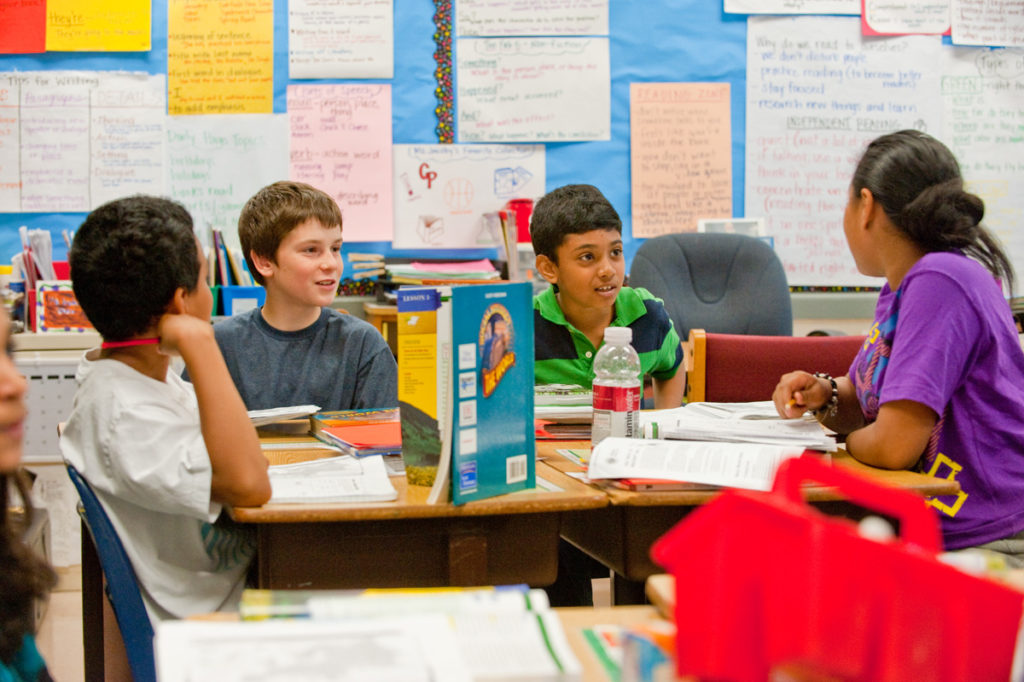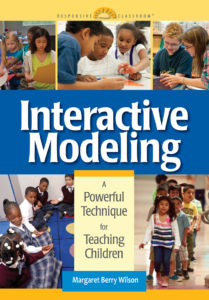

As they chatted with partners, I heard students say things like, “I’m going to have to respectfully disagree with that because on this page, the author said, . . .” or “I see what you’re saying, but I wonder if . . .” When the teacher invited the students to share out their ideas with the whole group, the children again used respectful terminology to show a remarkably wide variety of opinions: “I want to piggyback on what _____ said,” or “I want to ask _____ a question about what he said because I’m not sure I agree.”
Wow, these were second graders! It was impressive to see children so young using such respectful and articulate language. But although I was impressed, I wasn’t surprised, because I knew their teacher had used Interactive Modeling to teach many of the conversation skills I observed. Interactive Modeling certainly isn’t the only way to teach children important skills like how to disagree respectfully, but it can be a particularly effective tool. This fast-paced, seven-step technique for teaching specific academic or social skills is powerful in many ways.
First, simply by teaching an Interactive Modeling lesson on a particular skill or routine, we create an expectation and a vision for students. In this case, this teacher, just by devoting time to this lesson, sent students the clear message that they can disagree, question, or only partially agree with others, but still respect and get along with them.
Second, the structure of Interactive Modeling gave the students a chance to see and hear what respectful disagreement might look and sound like. They had a chance to notice for themselves the exact words and tone to use when respectfully disagreeing. The lesson also gave the children a chance to actually practice wondering, disagreeing, and questioning and to get some immediate feedback from the teacher about how they were doing. (To see examples, check out these sample scripts for Interactive Modeling lessons, including one for a lesson on disagreeing respectfully that you can adapt for your class.)
In the days and weeks after the lesson, the teacher had given the students opportunities to keep practicing these skills in real-life classroom situations. By the time I visited, the students were well on their way to internalizing the skills and could put them to use automatically.
I was especially struck by these students’ ability to cheerfully disagree because it seems to be a skill that many adults, including me, never fully developed. In my case, no one ever explicitly taught me how to disagree, much less encouraged me to practice. Instead, I was left to figure it out on my own. I learned from reading scenes in books or watching characters on television—which mainly taught me how to state my case and then dramatically exit a room. I watched people I loved sometimes disagree, but without getting into any specifics, I can tell you that their skills were pretty low in this area. And at school? I don’t think anyone even wanted me to disagree.
These second graders are already so far ahead of me! It’s exciting to imagine how, with continued teaching, guidance, and feedback from teachers and other caring adults, these children might experience workplaces, politics, and home lives in adulthood that might look so much different and better than our own. And, it’s exciting to consider how well they could in turn teach these skills to their children or students!
Interactive Modeling: A Powerful Technique for Teaching Children
Margaret Berry Wilson is the author of several books, including: The Language of Learning, Doing Science in Morning Meeting (co-authored with Lara Webb), Interactive Modeling, and Teasing, Tattling, Defiance & More.